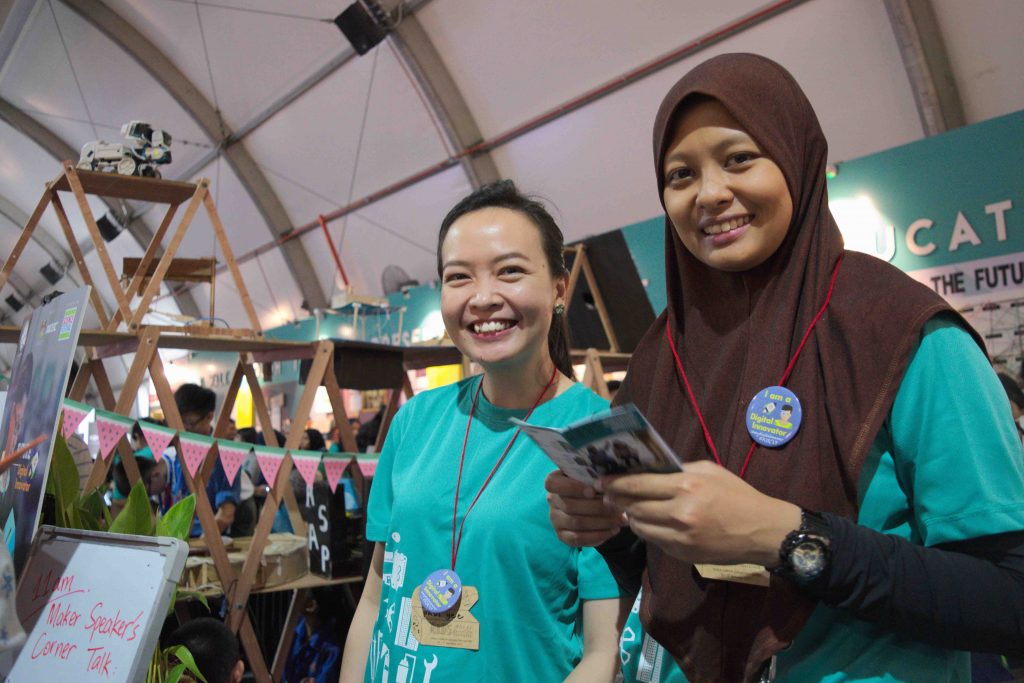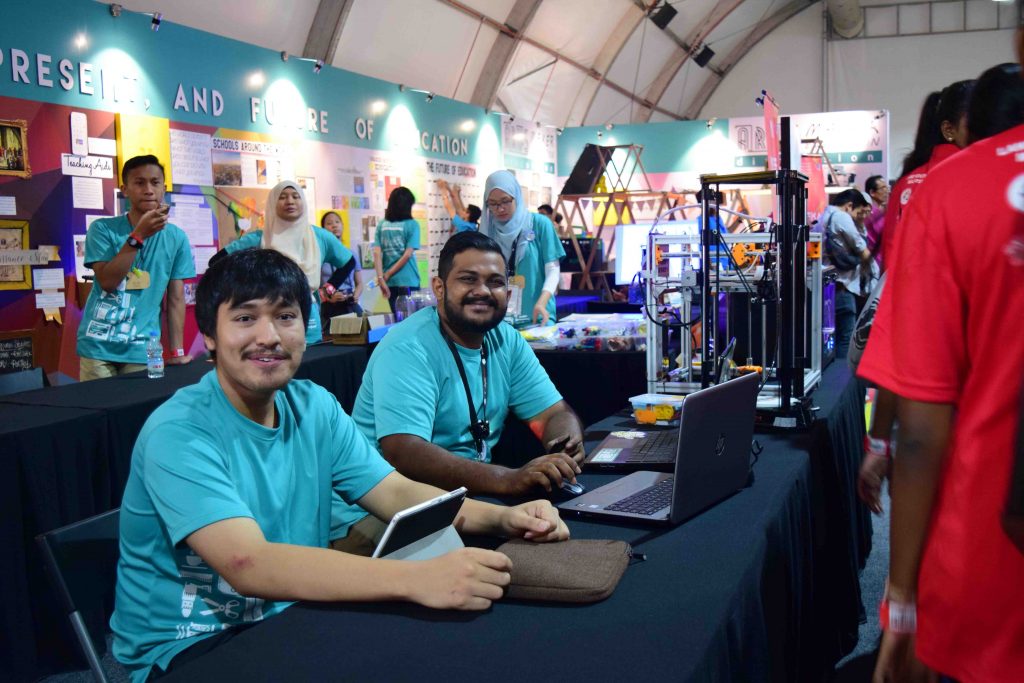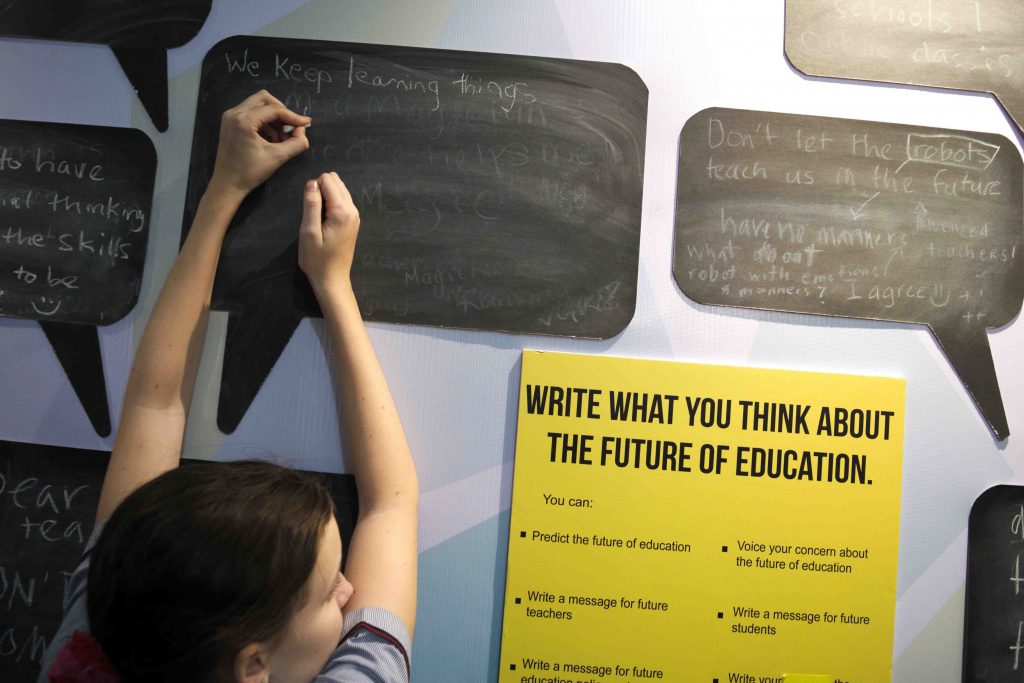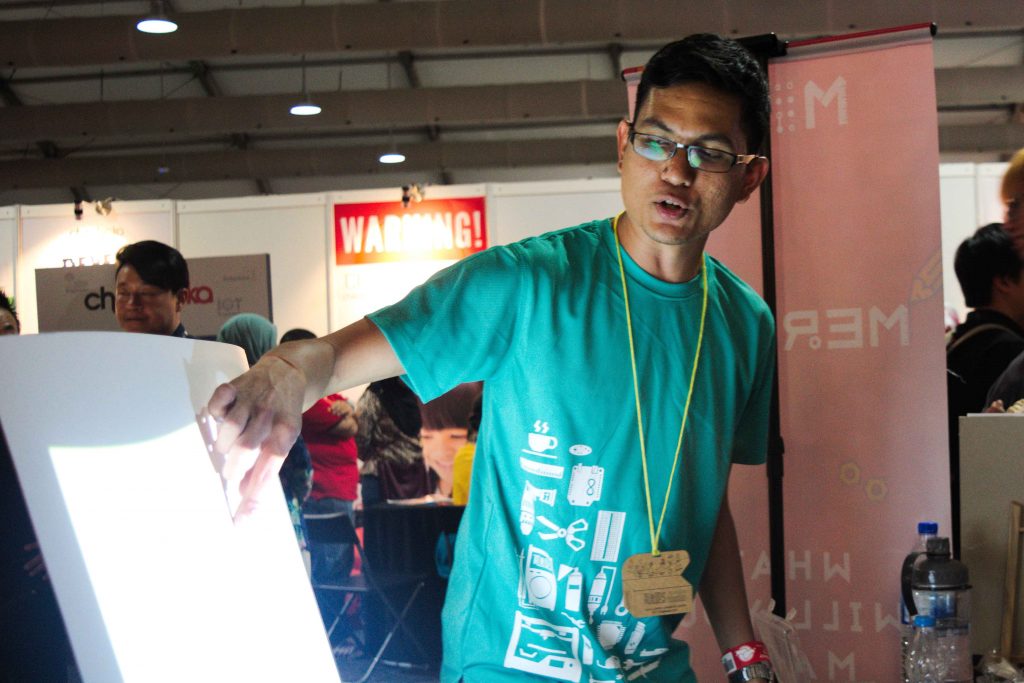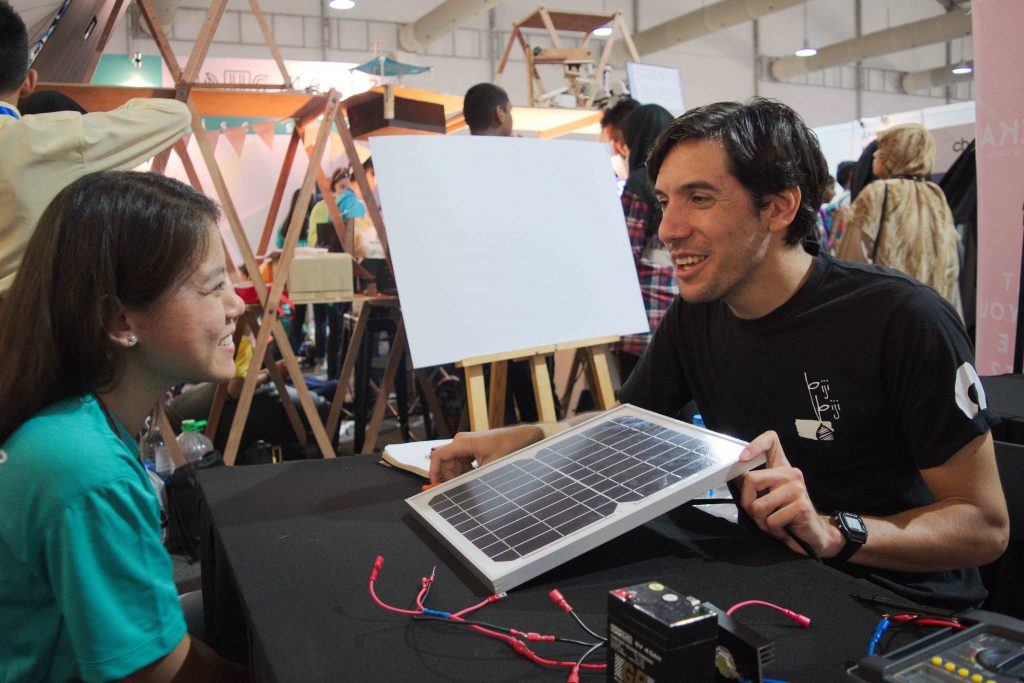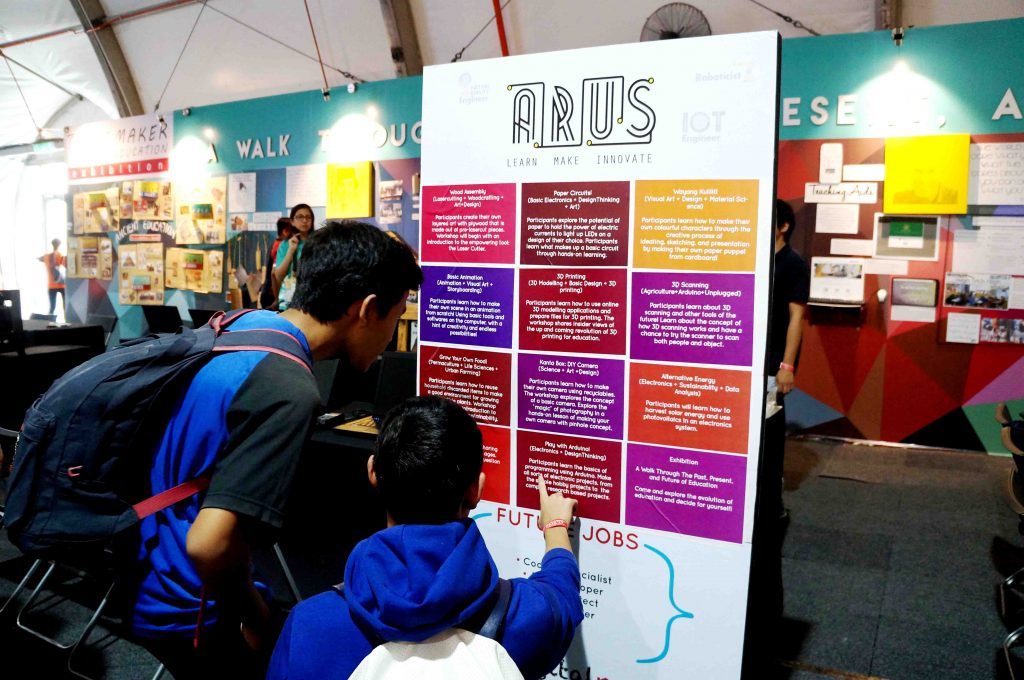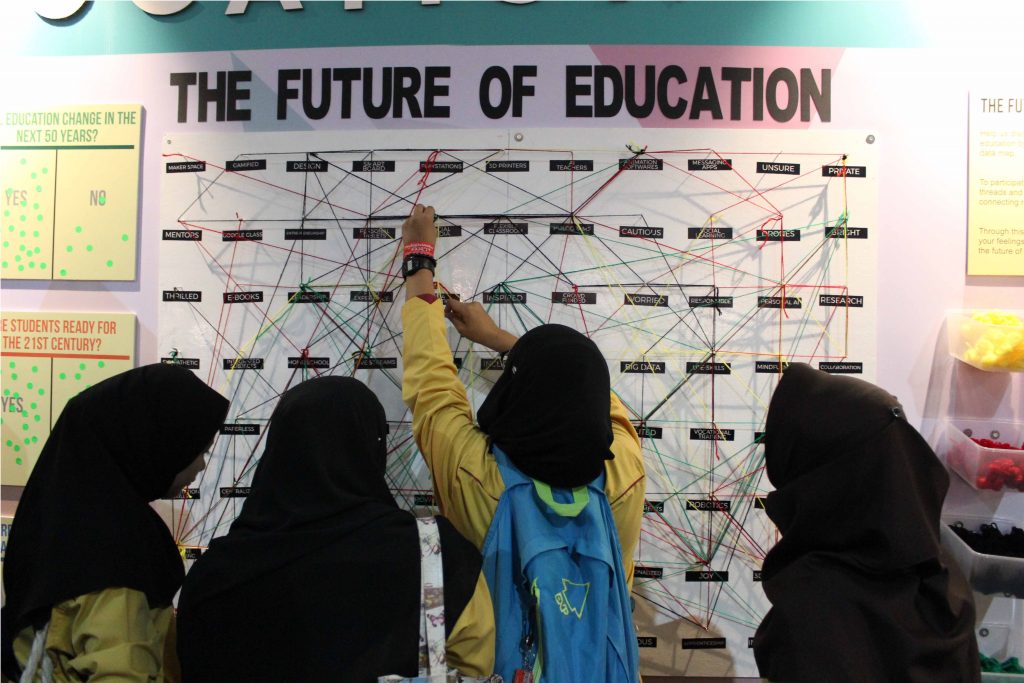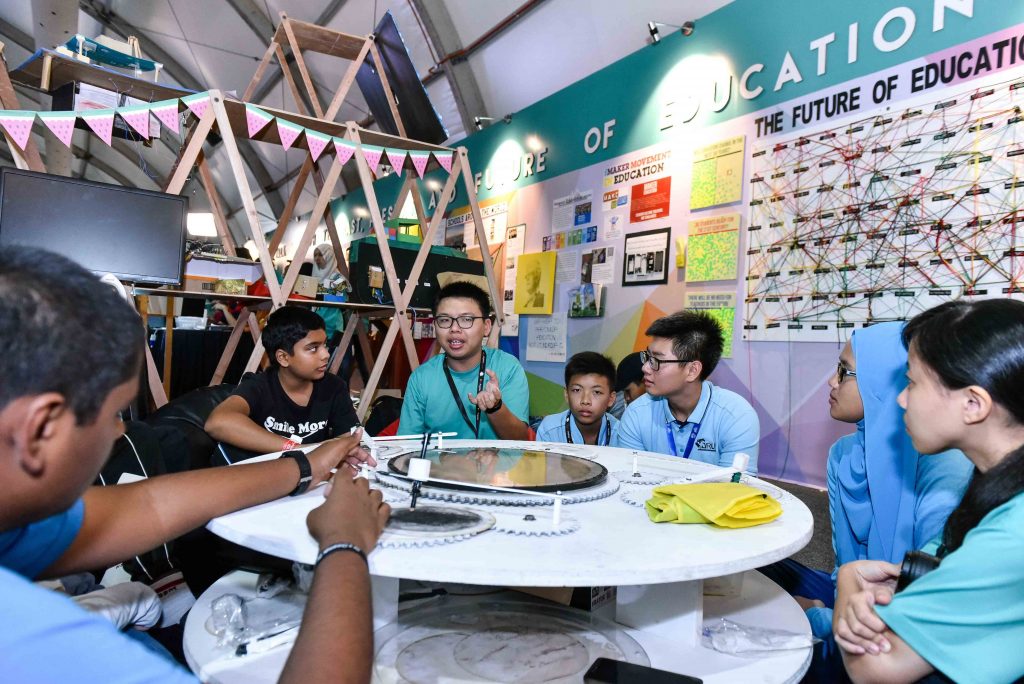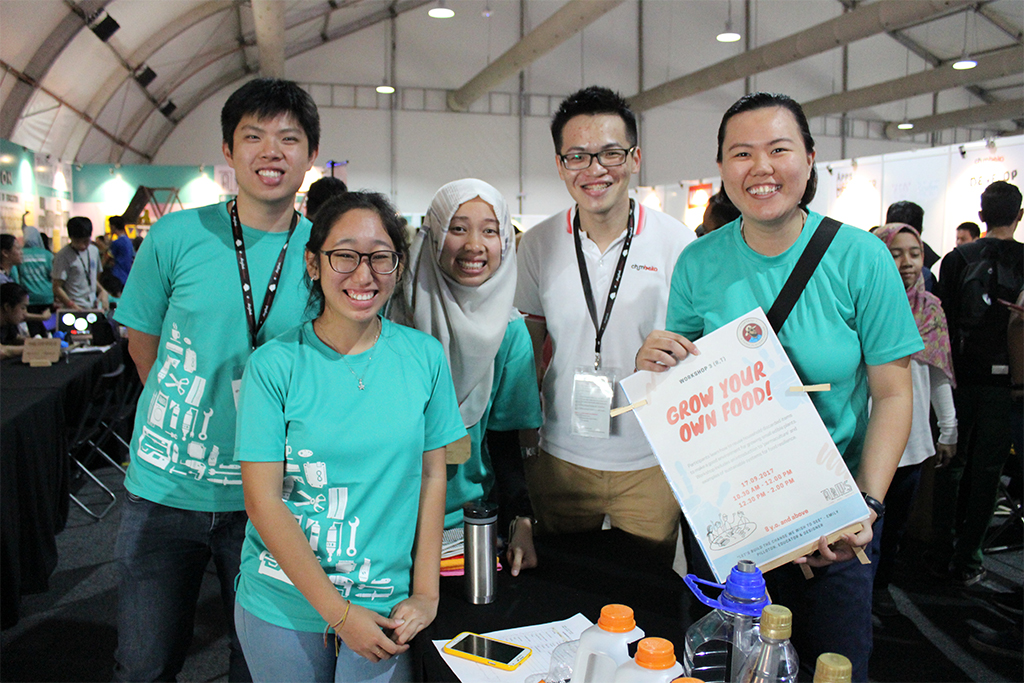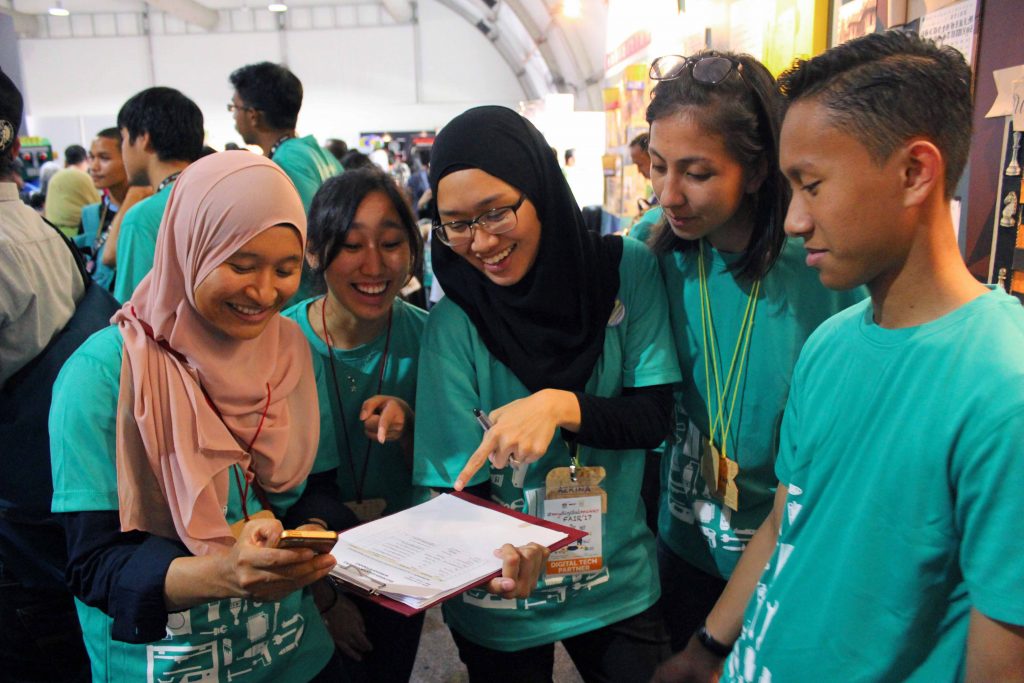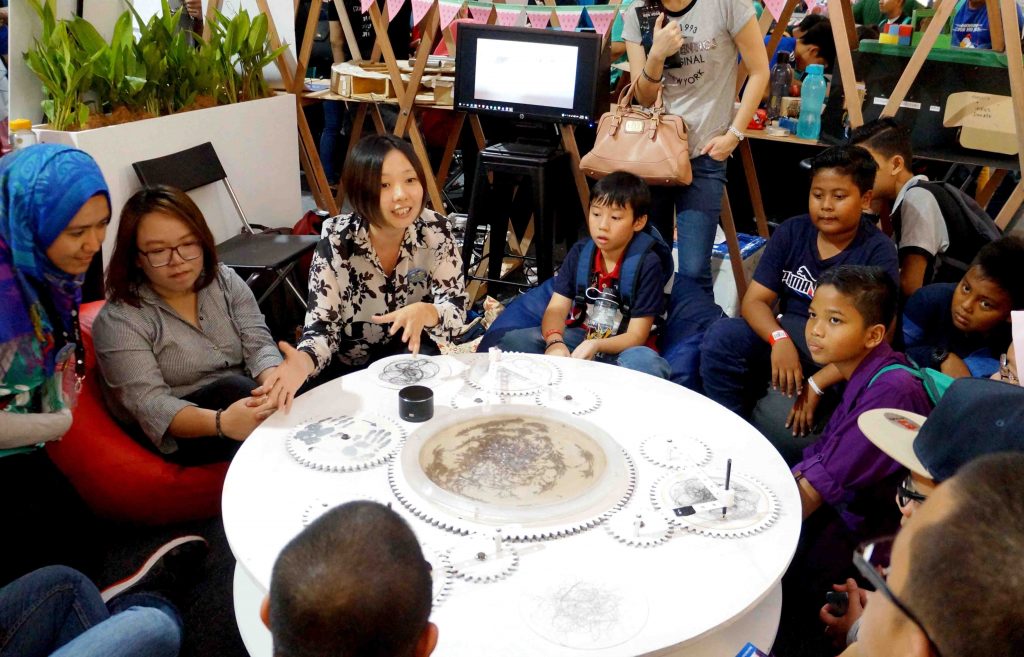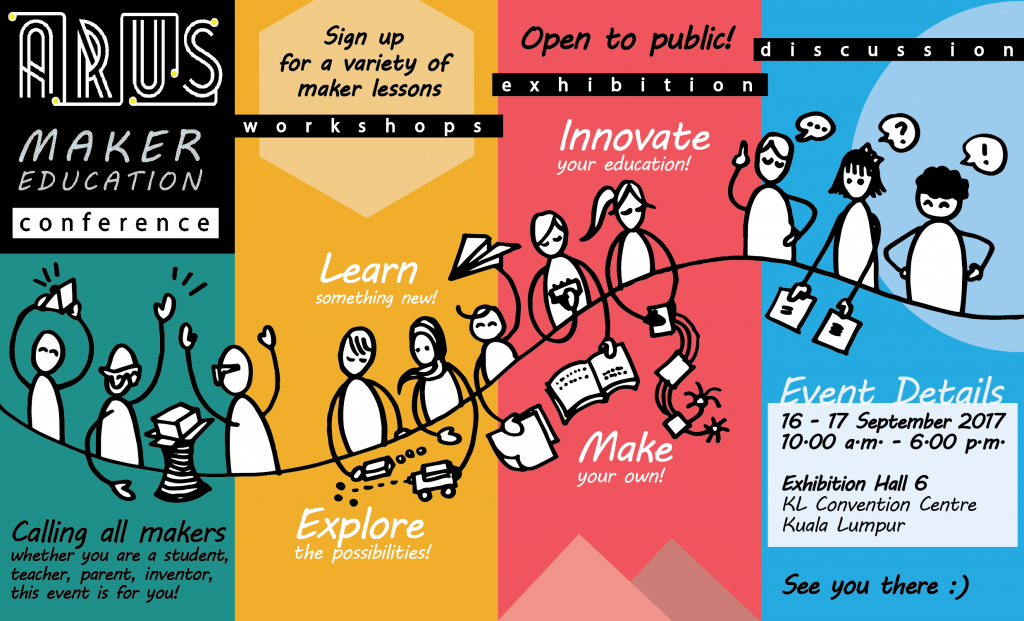The Arus Maker Education (ARMED) Conference aims to showcase the potential of having maker education as a norm in our schools, through a variety of activities at our big booth in conjunction with MDEC’s #mydigitalmaker Fair 2017. ARMED is open to the public, with colourful exhibitions, engaging workshops and inspiring discussions that happened almost simultaneously. By interacting with the public, Arus hopes to create more awareness about Maker Education and the need for our community to have more innovators and critical thinkers that can provide real-life solutions.
ARMED collaborated with many different passionate individuals, collective practitioners, organizations and companies to run exciting workshops and discussions. We believe it is only through collaboration that we can attract like-minded people by capturing the attention of children, students and parents to participate – and some even got a chance to bring home a token of their experience with Arus.
The workshops lineup with 9 collaborators allowed for a variety of hands-on learning which includes basic electronic circuitry and basic programming with Arduino, understanding Solar Panels and photovoltaics, 3D Printing and 3D Scanning, introduction to Permaculture, making shadow puppets (Wayang Kulit), basic animation skills and many more. Other collaborators also came in to share their Maker Journey and creations with students and the general public. They inspired those who may be seeking something new to learn or finding a new perspective to explore new career possibilities.
The exhibition includes a 20-meter visual treat called “A Walkthrough the Past, Present and Future of Education” where there are interactive displays that informs us about the distinct views on education through the years, of ‘how education was viewed since the early civilisations’ to ‘how education is taught today’ and ‘how education could evolve in the future’. Besides the wall exhibition, Arus students from Penang and Selangor came to showcase their projects as part of the Student Exhibition on a unique shelf made by the Arus Penang team.
Young children crowd around the whiteboards and interact with the displays, writing out their names using symbols and doodles from the ‘Ancient Alphabets’ section. The public of all ages, came by to add their opinions in the form of colourful strings to the wall of the ‘Future of Education’. Parents and their children worked together to find the right words that match their ideas and thoughts.
Teenage students were adding their input to the ‘future’ of education, by using white chalk to add a description of what they want to see in the future. Younger primary school children came by to add stickers on regions of ‘yes’ and ‘no’, showing their choices to answer questions about how would education change in the few years to come. For example, questions like ‘Will teachers cease to exists in the future?’, to which most visitors answered “NO”, gives us a suggestion that the public disagrees with education being automated and using artificial intelligence instead of having teachers in the class. Other questions, like ‘Are students ready for the 21st century?’, to which visitors answered ‘YES’ and ‘NO’ equally, shows us that the level of readiness of students is still questionable.
Older students crowd around areas of the Education timeline to see how exhibits are made, observing the connectors and how each piece is designed. College students are attracted by the colourful pieces on the exhibition, came closer to see the exhibits clearer, and discussed more analytically whether they learn this in school or not. Those who knew more about something, further elaborated on their ideas, extrapolating on historical happenings or possibilities and what is not shown on the timeline.
Family and friends stopped halfway along the long exhibition to take a selfie or a group photo with their favourite part from the informative exhibition. Fathers carrying their young children on their shoulders came by the exhibit to allow their children to interact with pieces placed higher up, that the small children wouldn’t be able to see on their own. Friends quizzing each other out on world geography and using the information given to test their understanding or simply teasing each other to a good laugh at the “Schools of the World“ section.
Teachers and their students took out their cellphones to try out the augmented reality portion on the school science textbook on display. Some teachers were shocked and never knew there is such an app that could be used to enhance their students’ attention in class! School students were testing out their knowledge at the “Who gets Educated?” chessboard analogy of education during the Middle Ages in ancient Europe. The detachable puzzle pieces helped students to make connections between the shapes and the descriptions provided, learning something new. History is quite fun!
